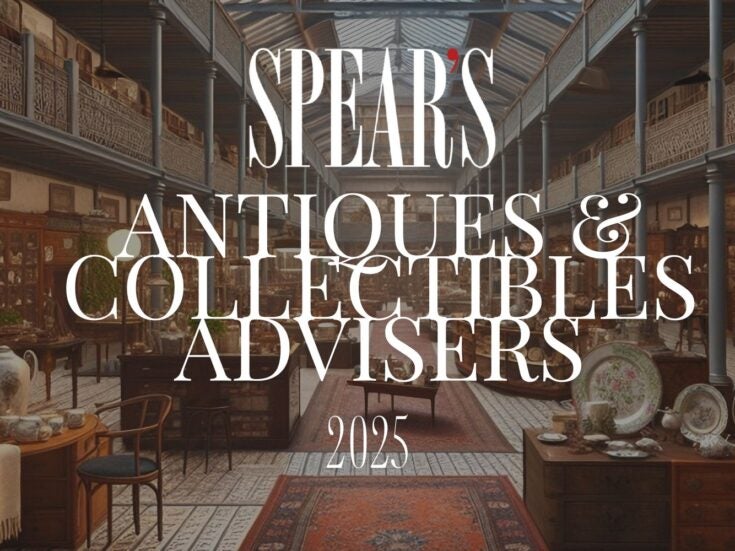
Sir Thomas Lipton’s Extraordinary Life and his Quest for the America’s Cup
MICHAEL D’ANTONIO
Riverhead, 368pp
Review by Peter York
A walking talking brand with distinctive facial hair and dress code. An international ‘sportsman’ with a gift for constant transatlantic publicity that lifted his business’s brand awareness sky-high. The little man’s champion against more expensive Establishment suppliers. It isn’t who you think. We’re talking more than a century earlier than Branson: R Thomas J Lipton, born in 1848, was America’s favourite Brit (actually a Glasgow Irish Scot), the Great Victorian/Edwardian grocer, yachtsman, tea-planter, philanthropist — and the original master of modern publicity.
His name survives now as practically the only tea you can get in American hotels and restaurants, and through historic royal associations — as Sir ‘Tommy’ Lipton, one of Edward VII’s rich friends. In my mind’s eye he’d looked a bit like the King (short and fat) and belonged in a group of plutocrats that the King brought out of trade and into the social fold. And I’d imagined his back-story could have been like Mr Polly’s — a shop assistant in a lower-middle London suburb.
But the Tommy Lipton story, as Michael D’Antonio’s biography A Full Cup shows, was spectacularly more interesting than that. Lipton was born during a cholera outbreak in the classic Glasgow slum, the Gorbals, the worst of the places that had so shocked Engels a few years before. His parents were Irish immigrants who ran the smallest hole-in-the-wall ham-and-eggs grocery imaginable. At 17, Lipton had been a cabin boy on the Caledonia, a rough steamer taking working-class Scottish immigrants to New York. Three years of casual work criss-crossing 1860s America — picaresque but brutal — followed and then in 1869 he landed the crucial job, as a shop assistant in the food department of the retail tycoon AT Stewart’s new Broadway department store.
Nineteenth-century American retailing gave us Selfridges and the inspiration for any other halfway successful entrepreneur who understood that big retail needs theatre (art direction, staff training, novelty) and publicity (newspaper advertising, PR and stunts). The young Lipton saw modern department store retailing develop on Broadway and Sixth Avenue — especially Macy’s, with its themed tableaux, aggressive advertising and in-store discounts.
Back in Glasgow in 1870, in time for the Empire’s Second City’s great growth spurt, Lipton soon reapplied what he’d learnt and became a trader himself. Within a few years, established in his own Glasgow grocery, Lipton started developing his own reliable supply lines in the Scottish rural hinterland, in his parents’ native County Fermanagh, and later the US and Canada. Technology — new railway lines, refrigerated ships — made it all possible. And he started stunting (doormen in costume, comedy pigs) and advertising (sandwich-board men, local papers and cartoon posters).
The young Tommy Lipton who understood, charmed and persuaded Glasgow’s wee wifeys was tall, strong, handsome and aggressive. And, according to D’Antonio, gay. As he moved from smart Kelvingrove flat to suburban manse to grander Scottish houses, Lipton took his parents with him and his diligent younger employee, William Love. He never shared with anyone else. A professional babe magnet in later life (American newspaper stories typically ran ‘bachelor millionaire sportsman seeks American bride’), he managed his personal brand carefully.
As the business expanded to become one of the first grocery multiples, Lipton grew through Scotland and down through England from the North. He developed the theme of the working-class family’s constant friend, with better, more reliable-quality food at lower prices, the basis of modern branding and all driven by marketing with Lipton at the centre, the eponymous brand.
Once established in London in the 1890s with a giant fourteen-acre factory and distribution centre near the City Road and a big house in Southgate (clearly rural then) and with real money to burn, Lipton moved himself and the brand into positively vertical take-off social mobility. He met Princess Alexandra, the Prince of Wales’s beautiful Danish-born wife, and bailed out her 1897 Jubilee Fund to provide celebratory dinners for the poor. There followed a Royal Warrant, a baronetcy and an altogether bigger picture.
Lipton was starting to meet toffs and plutocrats with yachts and to see the global branding potential of the America’s Cup yacht race. From 1899 to 1930 he spent millions competing against the New York Yacht Club’s finest, with their increasingly unbeatable money and new marine technology, and he never won. But he made himself a Gilded Age plutocrat celebrity, and America’s favourite Brit. Always camera- and microphone-ready, Lipton worked over American mass-media audiences who resented the east-coast yacht-club toffs and arrogant bankers (Vanderbilt, JP Morgan) with his looks, charm and Irish poor-boy back-story.
His American apprenticeship meant he knew the language. His instinct for the emerging mass communication technologies and the Edwardian celebrity world that fed them generated the content. He spent something like £10 million a year in today’s money to support the Lipton brand, by then red-lettered over an eleven-storey Brooklyn block and a Chicago meat-packing plant, and featuring as a signature on America’s market-leading tea. It looked like a good business investment.
Michael D’Antonio is serving two markets slightly uncomfortably here — the business history one and the Great Yachtsmen Of Our Time niche. There’s far too much sea-going detail for the first, and the writing is dogged rather than elegant. But Lipton’s personal history, his World’s Fair scale of ambition, and the extraordinary period of change he spans — 1848 to 1931 — are literally astonishing.






